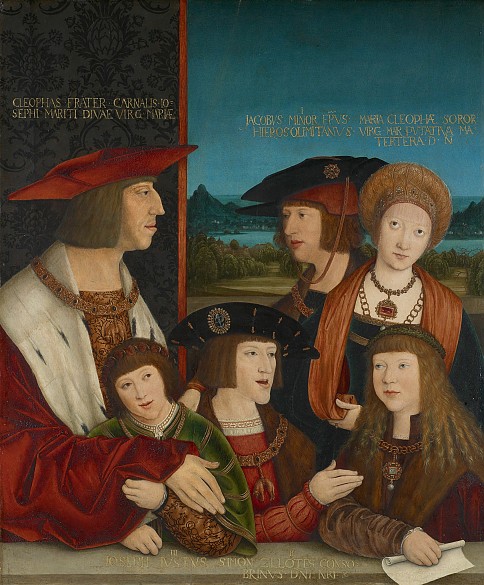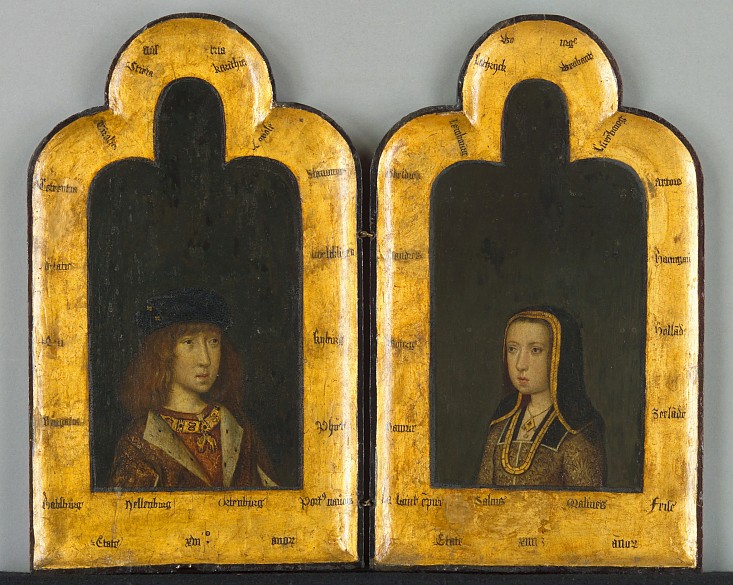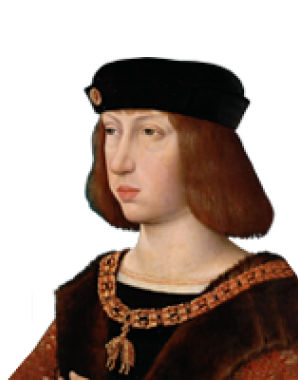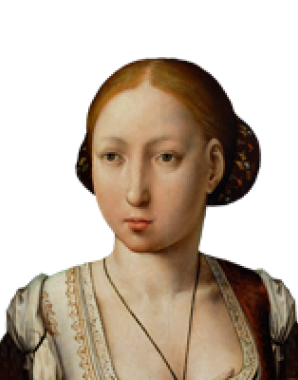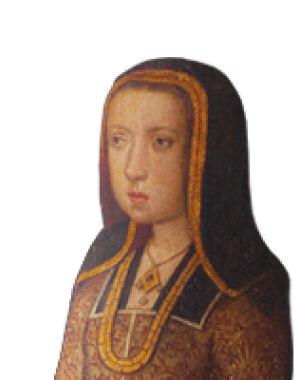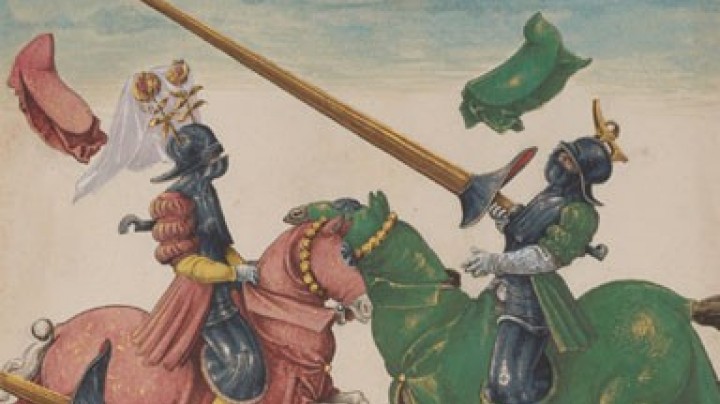Maximilian I: marriage and offspring
His marriage to Mary of Burgundy brought Maximilian not only a rich inheritance but also a partner with whom he enjoyed a close and loving union. His second marriage to Bianca Maria Sforza also involved large amounts of money, but their relationship proved extremely unhappy.
Mary (1457–1482) was the only child of Duke Charles the Bold and Isabella of Bourbon. She lost her mother when she was eight and was subsequently brought up by her step-mother Margaret of York, with whom she enjoyed a cordial relationship. In 1477, immediately after her father’s death, the planned marriage to Maximilian took place. Concluded for reasons of political expediency, the union became a solid partnership.
The five years of marriage resulted in three children:
The eldest son Philip (1478–1506), known as the Fair, had an illustrious future ahead of him as the heir to Burgundy and husband of the Spanish heiress Joan (the Mad) which was however to end abruptly with his early death at the age of only twenty-eight. He was the link between the two complexes of dominions in Burgundy and Spain that were to have such significance for the history of the Habsburg dynasty.
Their daughter Margaret (1480–1530) was originally also part of her father’s matrimonial policy. At the tender age of three she was promised to the French crown prince. However, the marriage never took place. After two marriages, both of which were of brief duration due to the early deaths of her husbands, she was appointed governor of the Netherlands, which gave her an important political voice within the dynasty.
Mary’s youngest child was a son named Franz, who died only a few months after his birth in 1481.
After Mary’s death at the early age of twenty-five as a consequence of a riding accident in 1482, Maximilian started to negotiate a marriage to Anne, heiress to the Duchy of Brittany. The marriage took place by proxy in 1490, but was annulled in 1492 before it had been consummated, as the French king Charles VIII was now set on marrying Anne himself. This was doubly embarrassing for the Habsburg dynasty in that Maximilian’s daughter Margaret had been betrothed to King Charles for some time. Margaret, who had lived in France since her earliest childhood and been brought up and educated for her future position as queen, was now sent back to her father. This was a humiliating defeat for Maximilian, and Charles was to become his life-long adversary.
The emperor was more successful in his efforts to secure the hand of Bianca Maria Sforza (1472-1510), and the couple were married in 1493. Orphaned at an early age, the young girl was offered to Maximilian by one of her relatives, Ludovico ‘il Moro’, who was keen to obtain a connection with the emperor in order to legitimize his rule over Milan which had come about in dubious circumstances. Maximilian’s motives lay once again in the bride’s substantial dowry. The first meeting between the couple did not take place until a full year after the wedding, at which Maximilian had been represented by a liegeman. Bianca was neglected by Maximilian and sometimes even treated in a degrading manner. Her husband also kept a tight rein on her finances and she found it difficult to provide for her retinue. She died in 1510, having lived the last years of her life in seclusion and political isolation. The marriage remained without issue.
In addition to his children from his first marriage Maximilian had a number of illegitimate offspring. Two sons named Georg and Cornelius are documented, although it is not known for certain who their mother was. Some sources speak of a middle-class woman from Salzburg, others of a Dutch noblewoman. Both sons were intended for the Church. The elder son Georg (c. 1505–1557) was even briefly considered as a candidate for the archiepiscopal throne in Salzburg but made a career as a diplomat and died while bishop of Liège. Little is known about the life of the younger son Cornelius (born c. 1507); even his date of death is unknown.
